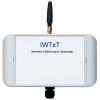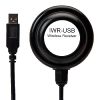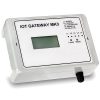Wireless sensor systems are a convenient and cost-effective way to monitor industrial processes and equipment. They eliminate the need for expensive wiring to remote locations, and they can be used in most environments, including outdoors. Wireless sensors are already widely used in a variety of industries, including water treatment, solar energy, and automotive manufacturing.
Some of the most common types of wireless sensors include pressure sensors, temperature sensors, and industrial receivers. Pressure sensors can measure pressure ranges from 0-50 mbar up to 0-400 bar. Temperature sensors come with either K or J type thermocouples or 3-wire PT100 sensor elements. Industrial receivers can receive readings from up to 128 wireless transmitters.
Wireless sensor systems can be used to monitor a variety of parameters, including pressure, temperature, level, flow, and vibration. They can also be used to control equipment and processes. Wireless sensor systems are becoming increasingly popular as the world moves towards wireless technology and the Industrial Internet of Things (IIoT).
 IWPT Wireless Battery Powered Pressure Sensor and Receiver
IWPT Wireless Battery Powered Pressure Sensor and Receiver IWTT Wireless Battery Powered Temperature Sensor
IWTT Wireless Battery Powered Temperature Sensor IWTxT Loop Powered 4-20mA Input to Wireless Transmitter
IWTxT Loop Powered 4-20mA Input to Wireless Transmitter IWmAT 4-20mA Signal Input to Wireless Transmitter
IWmAT 4-20mA Signal Input to Wireless Transmitter IWR-USB Wireless Sensors to USB Gateway Receiver
IWR-USB Wireless Sensors to USB Gateway Receiver IWR-5 Five Channel Wireless Sensor to 4-20mA or 1-5Vdc Output Signal Receiver
IWR-5 Five Channel Wireless Sensor to 4-20mA or 1-5Vdc Output Signal Receiver IWR-1 Single Channel Wireless Sensor to 4-20mA or 1-5Vdc Output Signal Receiver
IWR-1 Single Channel Wireless Sensor to 4-20mA or 1-5Vdc Output Signal Receiver IWR-PORT Wireless Sensors to Ethernet, RS232 or RS485 Gateway Receiver
IWR-PORT Wireless Sensors to Ethernet, RS232 or RS485 Gateway Receiver IoT Gateway Wireless Sensors to 2G 3G 4G Modem Receiver
IoT Gateway Wireless Sensors to 2G 3G 4G Modem Receiver IWVT 0-10Vdc Signal Input to Wireless Transmitter
IWVT 0-10Vdc Signal Input to Wireless Transmitter IWTRhT Wireless Ambient Temperature and Relative Humidity Sensor
IWTRhT Wireless Ambient Temperature and Relative Humidity Sensor IWTaT Wireless Ambient Temperature Sensor
IWTaT Wireless Ambient Temperature Sensor IW Series Industrial Wireless Measurement System
IW Series Industrial Wireless Measurement System IWDigT Switch or Pulse Input to Wireless Transmitter
IWDigT Switch or Pulse Input to Wireless Transmitter IWCTT Current Transformer mV ac Signal Input to Wireless Transmitter
IWCTT Current Transformer mV ac Signal Input to Wireless Transmitter
 Dairy farm water management using wireless ethernet gateway with submersible level sensors - Discover a robust solution for monitoring water levels in remote underground tanks. Learn how submersible sensors and a wireless-to-Ethernet gateway can overcome power and distance challenges in agricultural settings.
Dairy farm water management using wireless ethernet gateway with submersible level sensors - Discover a robust solution for monitoring water levels in remote underground tanks. Learn how submersible sensors and a wireless-to-Ethernet gateway can overcome power and distance challenges in agricultural settings. Solar-powered pressure sensing for remote wastewater networks - This system combines a battery-powered wireless pressure sensor with a solar-charged IoT gateway to deliver frequent data uploads to the cloud.
Solar-powered pressure sensing for remote wastewater networks - This system combines a battery-powered wireless pressure sensor with a solar-charged IoT gateway to deliver frequent data uploads to the cloud. Multi-point wireless pressure sensing for end-of-line vehicle brake testing - 5-channel wireless sensing solution for simultaneous brake reservoir pressure testing, integrating directly with existing PLCs via analog outputs.
Multi-point wireless pressure sensing for end-of-line vehicle brake testing - 5-channel wireless sensing solution for simultaneous brake reservoir pressure testing, integrating directly with existing PLCs via analog outputs. Wireless 4-20ma signal repeater for ultrasonic tank level sensor and DCS integration - Transmit multiple 4-20mA signals from remote tank level sensors to a central distributed control system (DCS) without the cost of new cabling.
Wireless 4-20ma signal repeater for ultrasonic tank level sensor and DCS integration - Transmit multiple 4-20mA signals from remote tank level sensors to a central distributed control system (DCS) without the cost of new cabling. Rotating planetary ball mill containers wireless temperature monitoring - Wireless transmitter and USB receiver for monitoring a planetary ball mill for days. Measure and log surface temperature on rotating equipment.
Rotating planetary ball mill containers wireless temperature monitoring - Wireless transmitter and USB receiver for monitoring a planetary ball mill for days. Measure and log surface temperature on rotating equipment. Water chiller wireless pressure and temperature monitoring - Wireless pressure and temperature sensors for providing efficient and flexible monitoring of water manifold cooling systems, and integrating seamlessly with HMI infrastructure.
Water chiller wireless pressure and temperature monitoring - Wireless pressure and temperature sensors for providing efficient and flexible monitoring of water manifold cooling systems, and integrating seamlessly with HMI infrastructure. HVAC chilled water wireless pressure monitoring in BMS - Upgrade your Building Management System with a reliable wireless pressure sensing system. This case study explores the implementation of a 0-10 bar gauge wireless transducer and receiver pair for HVAC applications, highlighting the 'plug and play' installation and long-term, low-maintenance operation.
HVAC chilled water wireless pressure monitoring in BMS - Upgrade your Building Management System with a reliable wireless pressure sensing system. This case study explores the implementation of a 0-10 bar gauge wireless transducer and receiver pair for HVAC applications, highlighting the 'plug and play' installation and long-term, low-maintenance operation. Tumbling pharmaceutical powder totes wireless pressure monitoring - How a wireless pressure transmitter and hygienic sensor combination offers precise and flexible pressure monitoring in pharmaceutical powder tumbling applications, ensuring safety and optimizing processes.
Tumbling pharmaceutical powder totes wireless pressure monitoring - How a wireless pressure transmitter and hygienic sensor combination offers precise and flexible pressure monitoring in pharmaceutical powder tumbling applications, ensuring safety and optimizing processes. Tire fabrication curing press wireless pressure monitor - Engineers in tire manufacturing required a method to wirelessly monitor low-range gauge pressure inside a curing press. A solution combining a wireless transmitter with a high-gain remote antenna provided the necessary signal integrity for process control.
Tire fabrication curing press wireless pressure monitor - Engineers in tire manufacturing required a method to wirelessly monitor low-range gauge pressure inside a curing press. A solution combining a wireless transmitter with a high-gain remote antenna provided the necessary signal integrity for process control. USV fire suppression seawater pressure monitoring using wireless sensor system - Discover how robust wireless pressure transducers and an RS485 gateway provide real-time fire suppression system monitoring on unmanned surface vehicles (USVs), overcoming challenges of seawater, interference, and battery life.
USV fire suppression seawater pressure monitoring using wireless sensor system - Discover how robust wireless pressure transducers and an RS485 gateway provide real-time fire suppression system monitoring on unmanned surface vehicles (USVs), overcoming challenges of seawater, interference, and battery life. Electrical panels fire and short circuit prevention wireless temperature monitoring - Wireless temperature monitoring solution for preventing electrical panel fires. This system uses wireless RTD sensors and a Modbus TCP/IP gateway for easy integration with your SCADA system, providing real-time data to enhance safety and prevent costly downtime.
Electrical panels fire and short circuit prevention wireless temperature monitoring - Wireless temperature monitoring solution for preventing electrical panel fires. This system uses wireless RTD sensors and a Modbus TCP/IP gateway for easy integration with your SCADA system, providing real-time data to enhance safety and prevent costly downtime. Wireless environmental sensors with custom MQTT SCADA system for energy management IoT platform - An energy management specialist required a multi-point wireless sensor network with specific accuracy requirements and a gateway that could output to their own MQTT-based SCADA system. This explains the selection of sensors and the dual gateway solution offered, covering both Modbus RTU and cellular MQTT options.
Wireless environmental sensors with custom MQTT SCADA system for energy management IoT platform - An energy management specialist required a multi-point wireless sensor network with specific accuracy requirements and a gateway that could output to their own MQTT-based SCADA system. This explains the selection of sensors and the dual gateway solution offered, covering both Modbus RTU and cellular MQTT options.
Wireless sensor systems offer a powerful solution for industrial and research applications where traditional wired sensor deployments are impractical or cost-prohibitive. This guide explores the key technical considerations for selecting and implementing wireless sensor systems, covering crucial aspects such as communication protocols, power management, data aggregation, security, and deployment scenarios. By understanding these factors, engineers and technicians can effectively leverage the benefits of wireless technology for a wide range of monitoring and control applications.
Wireless sensor systems are increasingly deployed in industrial and research settings where wired infrastructure is impractical, costly, or simply impossible to implement. The elimination of cabling offers substantial benefits in terms of reduced installation time and material costs, as well as increased flexibility in sensor placement. This is particularly advantageous in applications such as retrofitting existing machinery, monitoring rotating equipment, or deploying sensors in hazardous or hard-to-reach locations.
A key differentiator between various wireless sensor systems lies in the communication protocols employed. While common standards like Wi-Fi and Bluetooth have their place, industrial applications often demand protocols specifically designed for reliability, low power consumption, and extended range. Protocols like Bluetooth low energy, IEEE 802.15.4 2.4 GHz (MiWi Pro), and LoRa are frequently selected for their robustness in challenging environments and use very little power.
The choice of radio frequency is another critical consideration. Lower frequencies, such as those in the sub-GHz range, typically offer better penetration through obstacles and longer range compared to higher frequencies like 2.4 GHz (used by Wi-Fi and Bluetooth). This is vital in industrial settings with dense metal structures, concrete walls, or significant distances between sensors and gateways. Trade-offs exist, however, as lower frequencies often have lower data rates, making them less suitable for applications requiring high-bandwidth data streaming.
Power management is a crucial aspect of wireless sensor system design. Many systems rely on batteries, and maximizing battery life is essential to minimize maintenance. Energy harvesting techniques, such as utilizing vibration, solar power, or thermal gradients, can supplement or even replace batteries in certain applications. Careful selection of low-power components, optimized sleep/wake cycles, and efficient data transmission strategies are all vital to achieving long-term, unattended operation. For example, some applications may only require updates at 1-minute intervals, so using sleep mode can really help.
Data aggregation and transmission strategies vary significantly. Some systems employ a mesh network topology, where sensor nodes can relay data through each other, extending the effective range and providing redundant communication paths. Others utilize a star topology, with each sensor communicating directly with a central gateway. The choice depends on the scale of the deployment, the required reliability, and the physical layout of the environment.
Gateway devices play a crucial role in bridging the wireless sensor network to existing wired infrastructure or cloud-based platforms. These gateways often handle data processing, protocol conversion, and security functions. The selection of a gateway should consider factors such as supported communication protocols, data storage capacity, and integration capabilities with existing control systems or data analytics platforms.
Security is a paramount concern in any wireless sensor system. Industrial environments can be subject to interference, both intentional and unintentional. Robust encryption, authentication mechanisms, and secure communication protocols are essential to protect data integrity and prevent unauthorized access or control. Look out for AES-128 encryption or higher.
Deployment scenarios vary significantly. Wireless sensors find application in condition monitoring of rotating machinery, such as pumps and motors, where vibration, temperature, and current data can be used to predict failures. They are also used in environmental monitoring within industrial facilities, tracking parameters like temperature, humidity, and pressure. In research settings, wireless sensors enable data collection in remote or challenging environments, such as structural health monitoring of bridges or pipelines. Process control parameters are often used when the cost of laying signal cables is uneconomical.
Related Help Guides
Related Application Questions and Answers
Contact us about this Wireless page to request more information, or to discuss your application requirements.
